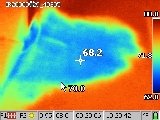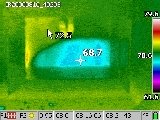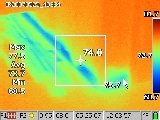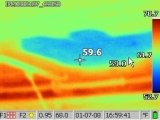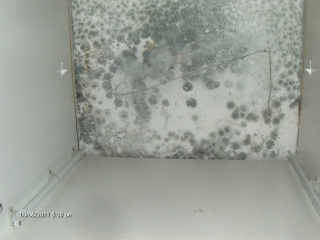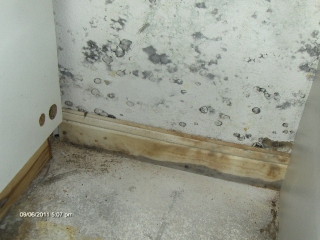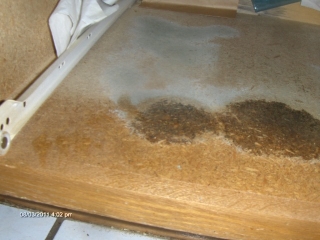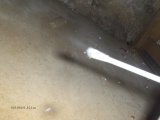|
Think you have a mold probelm? In the Sacramento Valley Call toll free:CLICK TO CALL 916-985-8973(SMART PHONE USERS) 1-877-784-5379 or 916-985-8973If water has gotten up against the wallsor behind the cabinets in your home, havethem dried out quickly, or the result may be themoldy walls and cabinets like in the pictures below.California Department of Public Health (CDPH) Indoor Air Quality Info Sheet Mold in My Home—What Do I Do? Updated March 2009This info sheet provides basic information on water damage in the home. It describes molds, why they may grow indoors, health concerns related to mold exposure, the detection and prevention of indoor mold, and cleanup procedures for mold-contaminated materials with reference to additional resources and documents. ABOUT MOLD
What are molds? Molds are simple, microscopic organisms, present virtually everywhere, indoors and outdoors. Molds, along with mushrooms and yeasts, are fungi and are needed to break down dead plant and animal material and recycle nutrients in the environment. For molds to grow and reproduce, they need only a food source—any organic matter, such as leaves, wood, or paper—and moisture. Because molds grow by digesting organic material, they gradually destroy whatever they grow on. Sometimes, new molds even grow on old mold colonies. Mold growth on surfaces can often be seen in the form of discoloration, frequently white, gray, brown, or black but also green and other colors.
How am I exposed to indoor molds?
Molds release countless, tiny spores, which travel through the air. Everyone inhales some mold every day without apparent harm. It is common to find mold spores in the air inside homes. In fact, most of the airborne spores found indoors come from outdoor sources. Mold spores primarily cause health problems when they are present in large numbers and exposure is high. This may occur when there is active mold growth within a home, office, school, or other building in which people live or work for long periods. People also can be exposed to mold by touching contaminated materials and by eating contaminated foods. Can mold become a problem in my home?
Yes. Molds will grow and multiply whenever conditions are right, that is, when sufficient moisture is available and organic matter is present. Be on the lookout for the following common sources of moisture inside and outside your home that may lead to mold problems: • Flooding • Leaky roof • Sprinkler spray hitting the house • Plumbing leaks and overflow from sinks or sewers • Damp basement or crawl space • Steam from showers or cooking or humidifiers • Wet clothes hung to dry indoors or a clothes dryer that exhausts indoors
Warped floors and discoloration on walls and ceilings can be indications of moisture problems. Condensation on windows or walls also is an important indication of excessive dampness and can be caused by some of the sources listed above. Should I be concerned about mold in my home?
Yes. If indoor mold contamination is extensive, it can lead to very high and persistent exposures to airborne spores. Persons exposed to high spore levels can become sensitized and develop allergies to the mold or they may develop other health problems (see below). Mold growth also can damage your furnishings, such as carpets, chairs and sofas, and cabinets. Clothes and shoes in damp closets can become soiled and start to fall apart. Unchecked, mold growth can seriously damage the structural elements in your home, for example, floors, walls, and ceilings. MOLD DETECTION
How can I tell if I have mold in my house?
You may suspect that you have mold if you see discolored patches or cottony or speckled growth on walls or furniture or if you smell an earthy or musty odor. You also may suspect mold contamination if mold-allergic individuals experience some of the symptoms listed above when in the house. Evidence of past or ongoing water damage also should trigger a more thorough inspection for damp conditions. You may find mold growth underneath water-damaged surfaces (for example, wallpaper) or behind walls, floors, or ceilings. Should I test my home for mold?
It depends. CDPH does not recommend testing as a first step to determine if you have a mold problem. Reliable air sampling for mold can be expensive and requires expertise and equipment that is not available to the general public. Private home and apartment owners generally will need to hire a contractor, because insurance companies and public agencies seldom provide this service. Mold inspection and cleanup usually is considered a housekeeping task that is the responsibility of a homeowner or landlord, as are roof and plumbing repairs, house cleaning, and yard maintenance. Another reason CDPH does not recommend mold testing is that individual susceptibility varies so greatly and there are few standards for an acceptable quantity of indoor mold. If you do sample, an outdoor air sample must be collected at the same time as indoor samples to provide a baseline measurement for comparison because there always is some mold in outdoor air and this air may enter a building.
How can I prevent indoor mold problems in my home?
Inspect your home regularly for the signs and sources of indoor moisture and mold listed on page one. Take steps to eliminate water sources as quickly as possible. Act immediately if a leak or flooding occurs. • Stop the source of leak or flooding • Remove excess water with mops or wet vacuum • Move wet items to a dry, well-ventilated area or place them outdoors to speed drying Move rugs and pull up wet carpet as soon as possible. • Open closet and cabinet doors and move furniture away from walls to increase circulation • Open wall cavities, remove baseboards, or pry open wall paneling if necessary to allow the area to dry thoroughly • Run portable fans to increase air circulation • Run dehumidifiers to remove moisture from the air • Depending on the time of year, determine if a window air conditioner or portable heater would help dry the area Do NOT use the home’s central blower if it or any of the ducts were flooded because this could spread mold throughout the home. Do NOT use fans if mold has already started to grow as this also could spread mold. |
Need what appears to be "mold" identified?

Call (916)-985-8973 for an appointment or for questions.
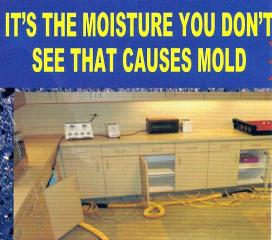
Below, checking moisture content of wood prior to rebuilding.
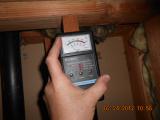
Below, Infrared Photos of Water Damaged Building Materials.
